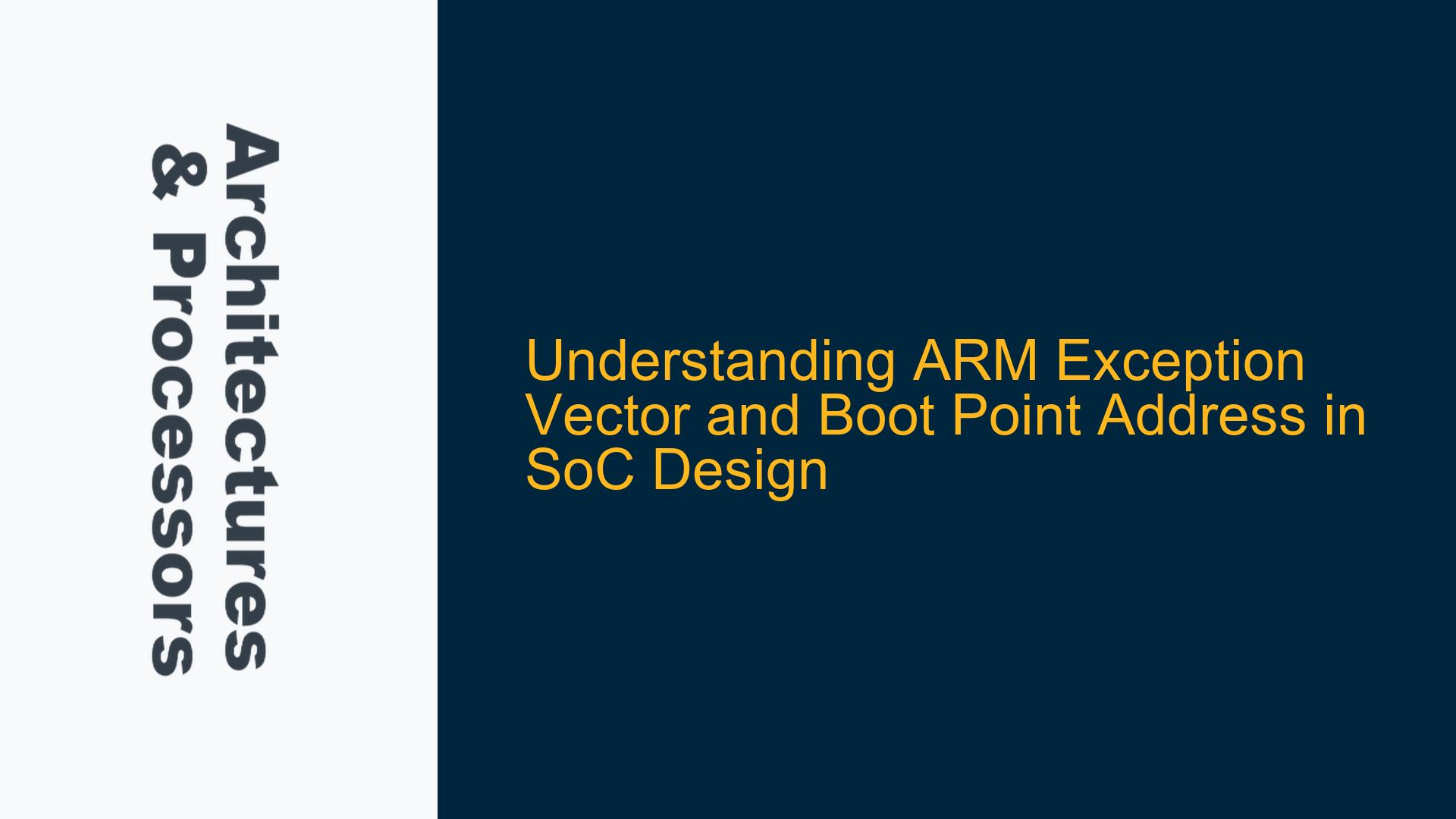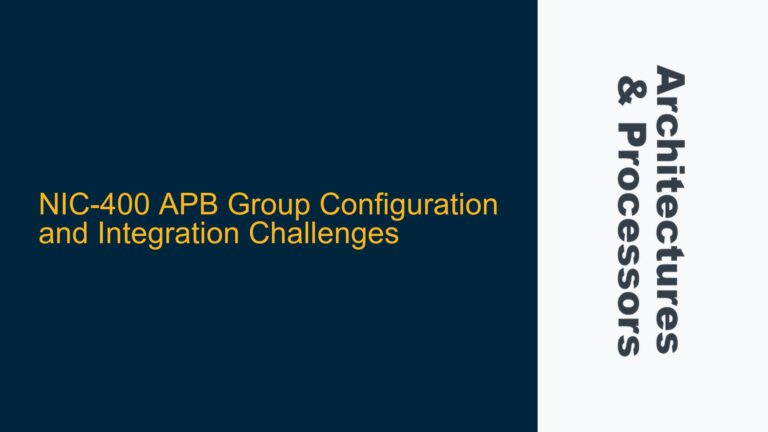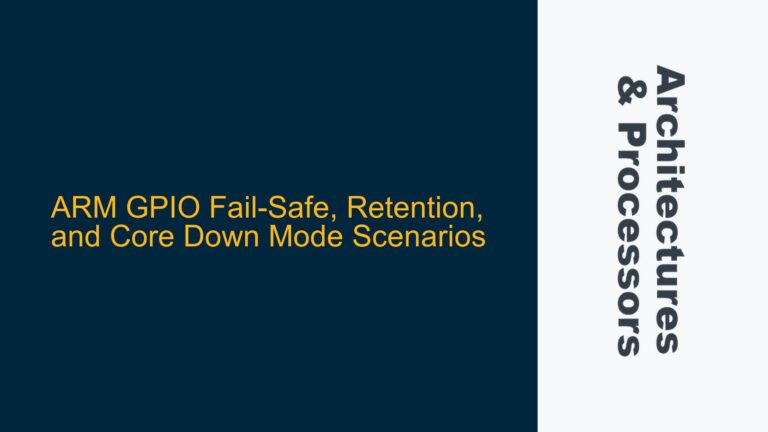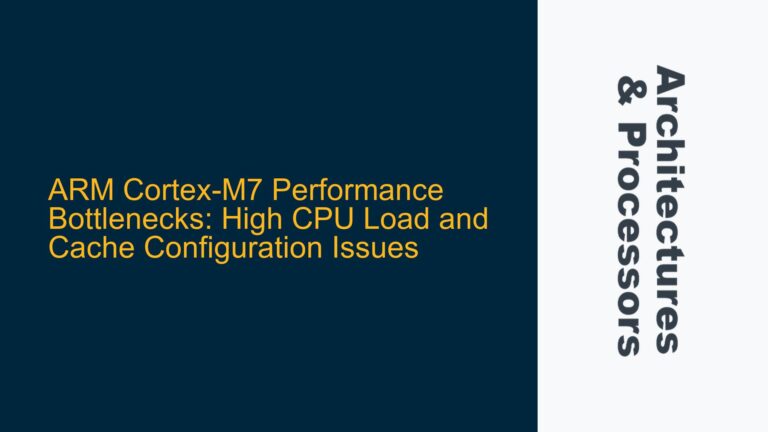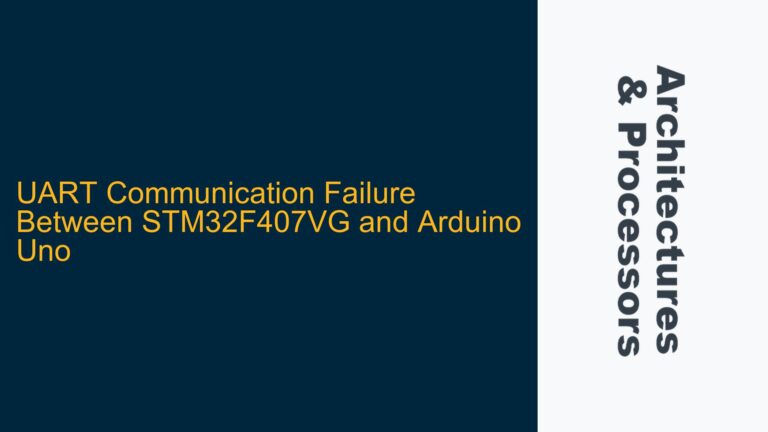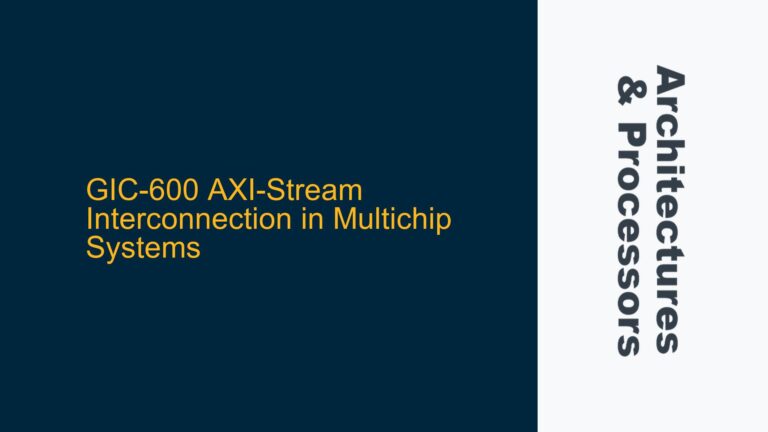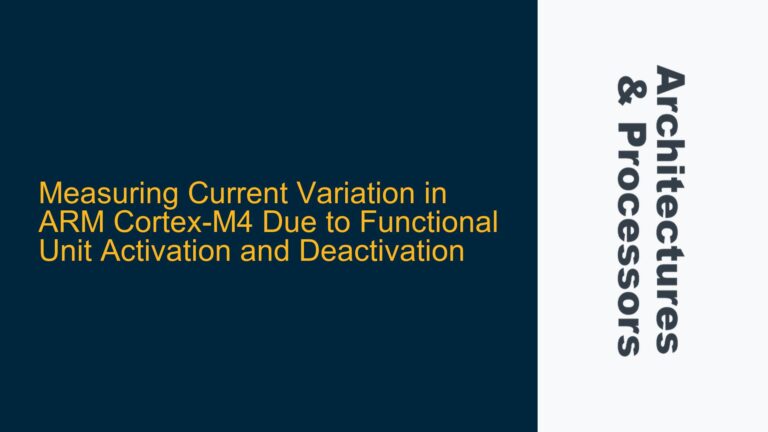ARM Cortex Reset Vector as the Starting Point of Code Execution
The ARM Cortex processor family, whether Cortex-M or Cortex-A, initiates execution from a specific memory address known as the reset vector. This reset vector is part of the exception vector table, which is a critical component of the ARM architecture. The reset vector is the first address the processor fetches after a reset event, which could be triggered by power-on, a hardware reset, or a software-initiated reset. The reset vector points to the reset handler, which is the first piece of code executed by the processor. This reset handler is responsible for initializing the system, setting up the stack, configuring the memory system, and preparing the environment for the main application code.
The reset handler is essentially the entry point of the boot process. It is not something that happens before or after boot-up; rather, it is the boot-up process itself. The reset handler performs all the necessary initialization tasks that are required before the main application code can be executed. This includes setting up the interrupt vector table, configuring the memory protection unit (MPU), initializing the caches, and setting up the system clocks. Once the reset handler has completed its tasks, it typically jumps to the main application code, which is where the actual application logic begins.
The reset handler is also responsible for handling any exceptions that may occur during the boot process. For example, if an invalid memory access occurs during the initialization phase, the processor will generate an exception, and the reset handler will need to handle this exception appropriately. This is why the reset handler is often considered the most critical piece of code in an ARM-based system, as it sets the stage for the entire operation of the system.
Differences in Reset Handling Between Cortex-M and Cortex-A Architectures
While the basic concept of the reset vector and reset handler is consistent across the ARM Cortex family, there are significant differences in how these are implemented and handled between Cortex-M and Cortex-A processors. These differences stem from the distinct design goals and use cases of the two architectures. Cortex-M processors are typically used in embedded systems where real-time performance and low power consumption are critical, while Cortex-A processors are designed for more complex applications, such as those found in smartphones and tablets, where high performance and multitasking capabilities are essential.
In Cortex-M processors, the exception vector table is typically located at the beginning of the memory map, starting at address 0x00000000. The first entry in this table is the initial stack pointer (SP) value, and the second entry is the reset vector, which points to the reset handler. The Cortex-M architecture simplifies the exception handling process by using a fixed vector table offset, which means that the vector table is always located at a specific address in memory. This simplifies the design of the reset handler, as the processor will always fetch the reset vector from the same location.
In contrast, Cortex-A processors use a more flexible approach to exception handling. The exception vector table in Cortex-A processors can be located at different addresses depending on the configuration of the memory management unit (MMU) and the system control register (SCTLR). The Cortex-A architecture supports multiple exception levels (ELs), each with its own vector table. The reset vector for Cortex-A processors is typically located at the highest exception level (EL3), which is used for secure monitor code. The reset handler in Cortex-A processors is responsible for initializing the system at the highest exception level and then transitioning to lower exception levels as needed.
Another key difference between Cortex-M and Cortex-A processors is the way they handle interrupts. Cortex-M processors use a nested vectored interrupt controller (NVIC), which allows for efficient handling of multiple interrupts with minimal latency. The NVIC is tightly integrated with the processor core, and the interrupt vectors are part of the exception vector table. In Cortex-A processors, interrupts are handled by a generic interrupt controller (GIC), which is a separate hardware component. The GIC is responsible for prioritizing and routing interrupts to the appropriate exception level, and the interrupt vectors are not part of the exception vector table.
Implementing and Verifying the Reset Handler in ARM-Based SoCs
Implementing the reset handler in an ARM-based SoC requires careful consideration of the system architecture, memory map, and initialization sequence. The reset handler must be designed to handle all possible reset scenarios, including power-on reset, hardware reset, and software reset. It must also be able to handle any exceptions that may occur during the initialization process. The reset handler is typically written in assembly language, as it needs to perform low-level operations that are not easily expressed in high-level languages like C.
The first task of the reset handler is to set up the stack pointer. The stack pointer is used to store temporary data and return addresses during function calls, and it must be initialized before any other code can be executed. The stack pointer is typically set to the top of the memory region allocated for the stack, which is usually located in the SRAM or DRAM of the SoC. Once the stack pointer is initialized, the reset handler can proceed to configure the memory system, including the MMU, MPU, and caches.
The MMU is responsible for translating virtual addresses to physical addresses, and it must be configured before any memory accesses can be made. The MPU is used to enforce memory protection rules, and it must be configured to prevent unauthorized access to critical system resources. The caches are used to improve memory access performance, and they must be initialized and enabled before the main application code can be executed.
After the memory system is configured, the reset handler must initialize the system clocks and peripherals. The system clocks are used to generate the clock signals that drive the processor and other components of the SoC, and they must be configured to the correct frequency before any other operations can be performed. The peripherals, such as timers, UARTs, and GPIOs, must also be initialized to ensure that they are in a known state before the main application code is executed.
Once all the initialization tasks are complete, the reset handler typically jumps to the main application code, which is where the actual application logic begins. The main application code is usually written in a high-level language like C, and it is responsible for implementing the functionality of the system.
Verifying the reset handler is a critical part of the SoC design and verification process. The reset handler must be tested to ensure that it correctly initializes the system and handles all possible reset scenarios. This includes testing the reset handler under different power-on conditions, such as cold boot, warm boot, and software reset. The reset handler must also be tested to ensure that it correctly handles any exceptions that may occur during the initialization process.
One common approach to verifying the reset handler is to use a simulation environment that models the behavior of the SoC. The simulation environment can be used to simulate different reset scenarios and verify that the reset handler behaves as expected. The simulation environment can also be used to inject faults and exceptions into the system to verify that the reset handler can handle these conditions correctly.
Another approach to verifying the reset handler is to use hardware emulation. Hardware emulation involves running the reset handler on a physical prototype of the SoC and verifying that it behaves as expected. Hardware emulation can provide more accurate results than simulation, as it takes into account the actual behavior of the hardware. However, hardware emulation can be more time-consuming and expensive than simulation, as it requires access to a physical prototype of the SoC.
In conclusion, the reset handler is a critical component of any ARM-based SoC, and it must be carefully designed and verified to ensure that it correctly initializes the system and handles all possible reset scenarios. The reset handler is the starting point of the boot process, and it sets the stage for the entire operation of the system. By understanding the differences between Cortex-M and Cortex-A processors, and by following best practices for implementing and verifying the reset handler, designers can ensure that their ARM-based SoCs are robust, reliable, and performant.
